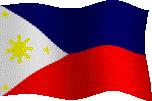
GEOGRAPHYNueva Vizcaya's rugged terrain has virtually isolated the province from central Luzon and the southern Philippines. It is essentially a river valley surrounded on three sides by mountains. These mountains, as well as the people who inhabit them, have served as a deterrent to travel and migration from outside the province. The most accessible route for immigration is from the north, down the river valley.
People inhabiting Nueva Vizcaya, or who have migrated to the province, are as diverse as the geography. They come from several different ethnic groups, speak different languages and have different cultures. Ethnic diversity as well as the rugged terrain, has contributed to the slow settlement and unification of the province. Until recently, each ethnic group has held steadfast to their ancestral culture. They have not welcomed outside influence either from fellow Filipinos or from others. Before the arrival of the Spanish there was no province of Nueva Vizcaya, only the geographical area inhabited by indigenous people. The Spanish began establishing political boundaries as they expanded their influence; the more prominent their presence in the area the better defined the boundaries.
In the sixteenth century Northern Luzon was divided into three provinces: Cagayan, Pangasinan, and Ilocos. The area of the upper Magat River valley, which is today part of Nueva Vizcaya, was unconquered and called Ituy. As the Spanish moved into this region they gave each area a more specific name. Names used in the region and the areas they represent are: Paniquy (Paniqui). The middle Magat area around Bayombong; the name also was applied more widely to include the Ganano valley area. A small settlement called Paniqui still exists west of Bagabag. Yogad (Yogat, Yoga). The region around the Cagayan-Ganano river junction, home of the linguistic and ethnic group also called Yogad, and centered on the town of Echague. Ituy (Itui, Tuy, Tui, Ytui). The upper Magat area from Bambang to Aritao and Dupax. It was at times applied to the whole middle-upper Magat region. Diffun (Difun). The mountainous zone between the upper Cagayan and Magat rivers.
There are still dominant mountain and small settlement of that name. Sinay, Corresponding to the ethnic name "Isinai," this term was occasionally applied to the upper Magat area. The Spanish created the province of Nueva Vizcaya in 1840 to include everything south of latitude in the Cagayan Valley. At the time, it encompassed Ituy and Paniqui, two Spanish mission territories, and the municipalities of Mayaoyao, Banaue, Lagawe, and Kiangan.
In 1856, Nueva Vizcaya was reduced in size with the creation of the province of Isabela in the central part of the Cagayan Valley. Nueva Vizcaya today can be divided topographically into two areas, the Upper Cagayan River Valley and the North Luzon Highlands. In its northern third, the Cagayan River rushes north out of the mountains to water northern Luzon. Southern Nueva Vizcaya consists of the three mountain ranges: the Cordillera Central, the Caraballo, and the Sierra Madre. These are the headwaters of the Magat River, which in turn runs north and feeds into the Cagayan. The Sierra Madre or Eastern Cordillera of Luzon is very rugged; its mountains reach heights of 6,000 feet and above. There are no roads through this mountain range which serves to isolate the area from the rest of the Philippines. Ruggedness, as well as the inhabitants of the Sierra Madre, limited Spanish and American expansion into that area. These mountains (and people) were also left alone because they offered no known economic benefits, unlike the lowlands or the gold mines in the central Cordillera. The Caraballo mountains close the upper end of the Cagayan Valley separating it from the Central Plains of Luzon. These mountains rise to an elevation of between 5,000 to 6,000 feet. They also serve to discourage travel between central Luzon and Nueva Vizcaya. Trails and roads did develop through these mountains but they were difficult to cross and many times would be destroyed by rain and mud slides during rainy season. Western Nueva Vizcaya is occupied by the Cordillera Central which has mountains reaching close to 10,000 feet in elevation. The Cordillera Central divides northern Luzon in half, east and west. As the range runs north it decreases in height, but in the south, where it is a boundary for Nueva Vizcaya, it is at its most rugged.
These mountains have always been a hindrance to travel into the province of Nueva Vizcaya from the west. All three mountain ranges have served to keep Nueva Vizcaya, if not isolated, difficult to reach from the east, south, and west. As will be seen later in this work, there was contact and trade from the Central Plains, but it was sporadic and difficult. Mountains, climate and inhabitants of these mountains discouraged convenient travel into Nueva Vizcaya from all directions but the north. The Cagayan River is the major river in northern Luzon. Its second largest tributary is the Magat River, which runs through the province of Nueva Vizcaya. Headwaters of the Magat are in the Cordillera Central around the municipality of Kayapa. Neither the Cagayan nor the Magat are navigable. Bamboo rafts are used occasionally, but the rivers are too shallow and rough for regular use.
Turn to Next Page
